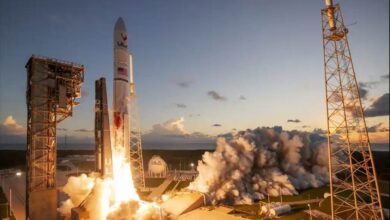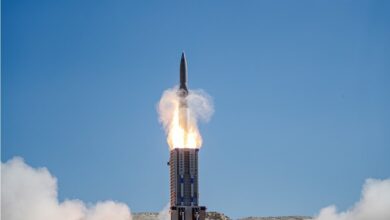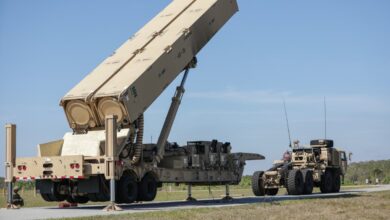US Agency Invests to Build Space-Based Missile-Tracking System
The system’s goal is to provide instantaneous response capabilities to enemy assets such as ballistic missiles and hypersonic glide vehicles.
The US Space Development Agency (SDA) on Monday announced contracts worth $342 million for two companies to build the first stage of a space-based missile-tracking system. New tracking satellites, part of the project’s “Tranche 0,” will be built for the National Defense Space Architecture (NDSA).
The contracts have been awarded to Space Exploration Technologies Corp. of Hawthorne, California – SpaceX – and L3Harris Technologies, Inc., of Melbourne, Florida.
Slated for completion at the end of fiscal year 2022, both companies have been tasked with building four overhead persistent infrared imaging, or OPIR, satellites for the tracking layer of the NDSA.
“The satellites will be able to provide missile tracking data for hypersonic glide vehicles and the next generation of advanced missile threats,” said Derek Tournear, the director of the Space Development Agency.
Missile-Tracking System
The system’s goal is to provide instantaneous response capabilities for a multitude of threats, chief among them enemy assets such as ballistic missiles and hypersonic glide vehicles.
As the backbone of the system’s architecture, transport satellites will be able to provide near-instant data to a wide variety of weapons platforms and formulate fire response solutions, enabling land, sea, and air forces to respond much more rapidly.
Tracking layer satellites will be built with the companies’ own designs, but according to SDA criteria. At the top of these criteria is missile tracking and communicating directly via laser link with transport layer satellites.

These contracts are the second round of awards for the NDSA, the first occurring around a month ago, awarded to York Space Systems and Lockheed Martin. Each company has been tasked with building ten transport layer satellites.
The tracking and transport layer contracts comprise Tranche 0 of the NDSA, consisting of 28 transport and eight tracking layer satellites. Contracts for the remaining satellites for this phase of the project will be put up in separate bids.
Tranche 0 is set for completion in 2022 while Tranche 1, planned to include a couple hundred satellites in the transport layer and a few dozen in tracking, is due in 2024. Tranche 2 will continue building on global coverage which will enhance military capabilities everywhere in the world and will be established by 2026.












